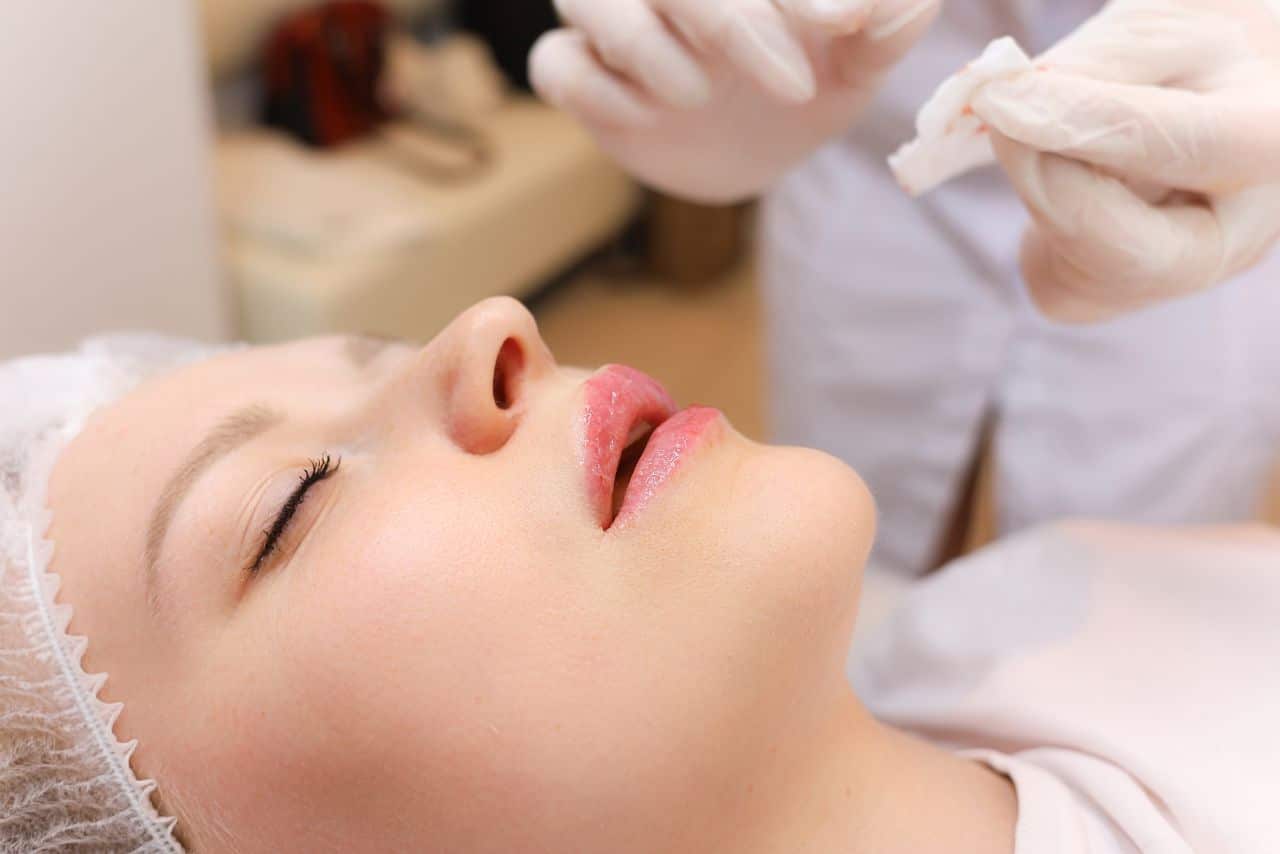
Sometimes you make a slight miscalculation and inject too much filler, and sometimes even mistake-free procedures can result in an unhappy patient. And in rare cases, injections of dermal fillers may affect blood flow in the area, leading to tissue death called necrosis. Whatever the reason, sometimes you need to reverse a dermal filler treatment. Reversing the results of a dermal filler treatment may or may not be possible, depending on the filler you used. In this article, we review several different dermal filler key ingredients to answer the question, how to reverse dermal filler results?
Calcium Hydroxylapatite
Dermal fillers made of calcium hydroxylapatite, such as Radiesse, use microspheres suspended in a gel to add volume to the dermis. In addition to adding immediate volume, these microspheres stimulate the growth of collagen within the dermis and provide the collagen with a scaffold to grow on. This means that even as the particles are breaking down within the skin, the collagen is still growing to make the treatment results last. The results may last a year or longer, but eventually they will start to fade.
Unfortunately there is no easy way to reverse the effects of calcium hydroxylapatite within the dermis. Some doctors have used corticosteroids to reduce swelling in the area, and some have used nitroglycerin paste to help improve blood flow to the area. Doctors may also use hyaluronidase to help break down the natural hyaluronic acid in the area, leaving more room for the filler with less pressure on the blood vessels. Breaking down the hyaluronic acid may also help reduce the overall volume in the area to reduce the visible augmentation. However, once the calcium hydroxylapatite filler is present in an area, it will be there for months until it gradually breaks down on its own.
Poly-L-Lactic Acid
Dermal fillers containing poly-L-lactic acid, such as Sculptra, work similarly to calcium hydroxylapatite fillers. The filler adds temporary volume to the dermis as the particles stimulate collagen growth and provide a scaffold within the dermis where the collagen can grow. As the poly-L-lactic acid breaks down, the collagen keeps growing so the treatment results last up to two years or longer.
As with calcium hydroxylapatite fillers, there is no easy way to remove poly-L-lactic acid once it is injected into the skin. If nodules form, doctors may use a needle to break the lumps apart and reduce their visibility. Massage may also help to smooth the look of the nodules, and corticosteroids may help to reduce swelling in the area. If major problems occur, doctors can use surgical excision to cut out the filler, but this is an invasive procedure and the end results may not be ideal. There is really no effective way to break down the poly-L-lactic acid, and allowing it to gradually break down within the body may be the only option in most cases.
Hyaluronic Acid
Most newer dermal fillers are made with hyaluronic acid, including major brands such as Juvederm and Restylane. Although this hyaluronic acid is produced from bacterial fermentation, it is similar to the hyaluronic acid found throughout the body’s tissues. This hyaluronic acid holds moisture within the skin, which adds visible volume. Because the filler tends to increase in size once it is injected, as it holds moisture, inexperienced injectors may accidentally add too much volume to an area. Normally hyaluronic acid breaks down quickly within the body, but these fillers are made using special techniques to strengthen the hyaluronic acid particles, usually cross-linking. This helps the hyaluronic acid last a few months to a couple of years, depending on the particular filler.
Luckily, hyaluronic acid fillers are much easier than most other dermal fillers to remove early. In the body, natural hyaluronic acid has its enzyme counterpart, hyaluronidase. Injectable versions of this enzyme, such as Hyalase, can help break down hyaluronic acid fillers within the body. This can reduce the amount of hyaluronic acid, shrinking the volume of the treated area. Side effects tend to be minimal from these injections, making it a viable dermal filler reversal option.
Just like getting a new hairstyle, patients may regret the appearance of their cosmetic injections once they see how they look, and overcorrection or necrosis are always possibilities. Keeping the dermal filler reversal options in mind may help you and your patient select the right product for their needs. To buy dermal fillers like Radiesse, Sculptra, Restylane, and Juvederm, shop with confidence at Health Supplies Plus.

About the Author: Doris Dickson is a specialist writer for Health Supplies Plus, focusing on the aesthetic medicine industry. She diligently researches cosmetic treatments and products to provide clear, concise information relevant to licensed medical professionals. Her work supports Health Supplies Plus’s commitment to being a reliable informational resource and trusted supplier for the aesthetic community.
Disclaimer: The content provided in this article is intended for informational purposes only and is directed towards licensed medical professionals. It is not intended to be a substitute for professional medical advice, diagnosis, or treatment, nor does it constitute an endorsement of any specific product or technique. Practitioners must rely on their own professional judgment, clinical experience, and knowledge of patient needs, and should always consult the full product prescribing information and relevant clinical guidelines before use. Health Supplies Plus does not provide medical advice.
